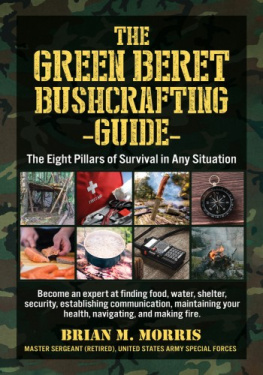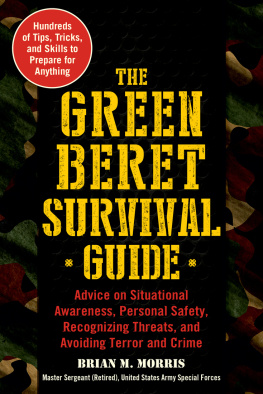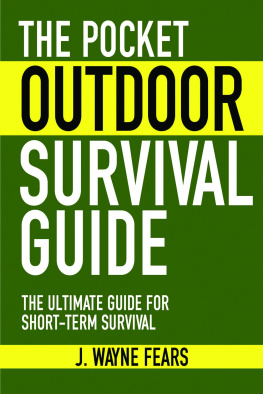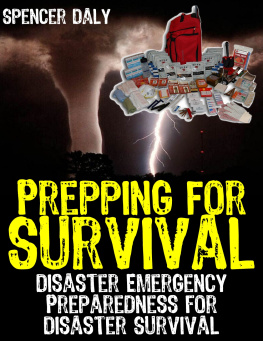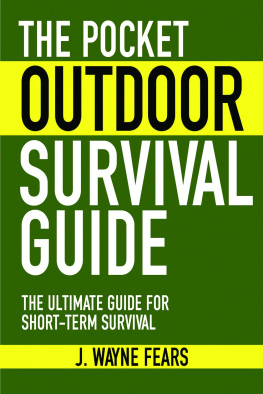Survival Triage priorities:
Breathing.
Bleeding.
Broken.
B REATHING
CHOKINGSELF HEIMLICH
1. Try to cough object up. If you cannot get it out, you must act quickly, before you lose consciousness.
2. Make a fist. Place it on your abdomen just above your navel and below your ribcage.
3. Hold the fist with your other hand for leverage.
4. Drive your fist in and up. Use a quick j-shaped motion. Repeat.
5. If the object does not dislodge, quickly find a stable, waist-high object, such as the back of a chair, a table, or a counter-top. With your hands still in place, bend over it, brace your hands. Drive your body against the object.
7. Repeat until the object dislodges.
CHOKINGOTHERHEIMLICH ADULT
1. From behind, wrap your arms around the victims waist.
3. Make a fist and place the thumb side of your fist against the victims upper abdomen, below the ribcage and above the navel.
4. Grasp your fist with your other hand and press into their upper abdomen with a quick upward thrust. Do not squeeze the ribcage; confine the force of the thrusts to your hands.
5. Repeat until the object has been expelled.
CHOKING-OTHER-INFANT
1. Lay the child down, face up, on a firm surface.
2. Kneel or stand at the victims feet, or hold the victim on your lap, facing away from you.
3. Place the middle and index fingers of both your hands below his rib cage and above navel.
4. Press in with a quick upward thrust. Do not squeeze the rib cage. Be gentle.
5. Repeat until object is expelled.
NOT BREATHINGOTHER-CPR
1. Check the victim for responsiveness. If not responsive or not breathing or not breathing normally, call 911. Place the phone next to the victim and put in speaker mode. If necessary, the dispatcher can help you with instructions.
2. If the victim still is not breathing normally, coughing, or moving, begin chest compressions. Push down on the center of the chest 2 to 2.5 inches, 30 times. Pump hard and fast at a rate faster than one per second. After 30 compressions:
3. Tilt the head back and lift the chin. Pinch the nose and cover the mouth with yours. Blow until you see the chest rise. Do this 2 times. Each breath should take 1 second.
4. Go back to 30 compressions.
5. Two breaths.
6. Continue until help arrives.
7. If doing two person CPR, the person compressing stops while the other person gives the two breaths.
BLEEDING
How to stop life-threatening bleeding. Signs of life-threatening are:
Spurting blood.
Blood that wont stop.
Blood that is pooling on the ground.
Clothing that is soaked with blood.
Bandages that are soaked with blood.
Loss of all or part of a leg or arm.
Continued bleeding in a victim who is confused or unconscious.
The key is to find and compress the bleeding blood vessel to stop the flow of blood.
Find the source of the bleeding. Remove clothing from over the wound.
2. Apply pressure. Any cloth will do, but if you have a Quikclot bandage, that will help.
3. If the wound is deep, stuff the cloth/bandage into the wound.
4. Put a compression bandage on the wound. Push down as hard as you can.
5. If a compression bandage is not available, apply continuous pressure until help arrives.
Tourniquet
For life-threatening bleeding from an arm or leg and the above doesnt work.
1. Wrap the tourniquet around the limb 2 to 3 inches above the source of the blood. Do NOT put it on a joint. Go above the joint if necessary.
2. Pull the free end of the tourniquet as tight as possible and then secure it around a solid stick or rod (windlass).
3. Twist the windlass until bleeding stops. Secure it in place or hold it.
4. Note the time it was applied.
BROKEN
Unless BROKEN is a compound fracture with life-threatening bleeding, stabilize the patient, and look further in this book for how to treat.
STAY CALM. THINK. TAKE CHARGE.
THE FIRST FIVE THINGS TO DO IN AN EMERGENCY
FIRST
Do a First Aid triage of yourself.
Assess the immediate situation.
If in immediate danger, get to a safe place.
What are the priorities of threats?
SECOND
Call for help
THIRD
Do a First Aid triage of others.
Breathing
Bleeding
Broken
Can the wounded be moved?
What is the status of your family/team? How will those not present assemble? Immediate Rally Point (IRP)? Emergency Rally Point (ERP)?
FOURTH
Assess the environment. Can you stay or do you need to leave?
If staying, check your supplies: water, communication, food and medical.
If leaving, dress in emergency clothing, take your Grab-n-Go bag.
If leaving, are you going to the ERP?
If leaving, and not going to Emergency Rally Point, what is your destination? Priorities being shelter, water, food, medication.
FIFTH
Once in a safe place, assess the overall situation and make long term plans.
More detail on each of these shortly.




